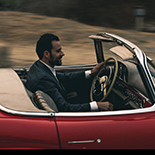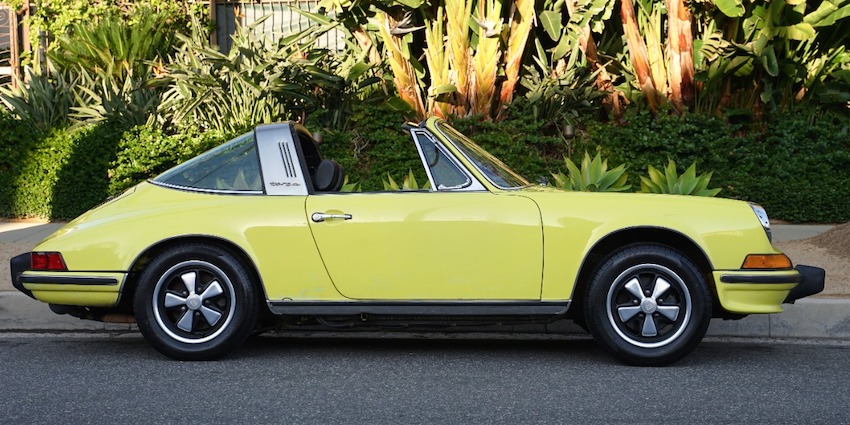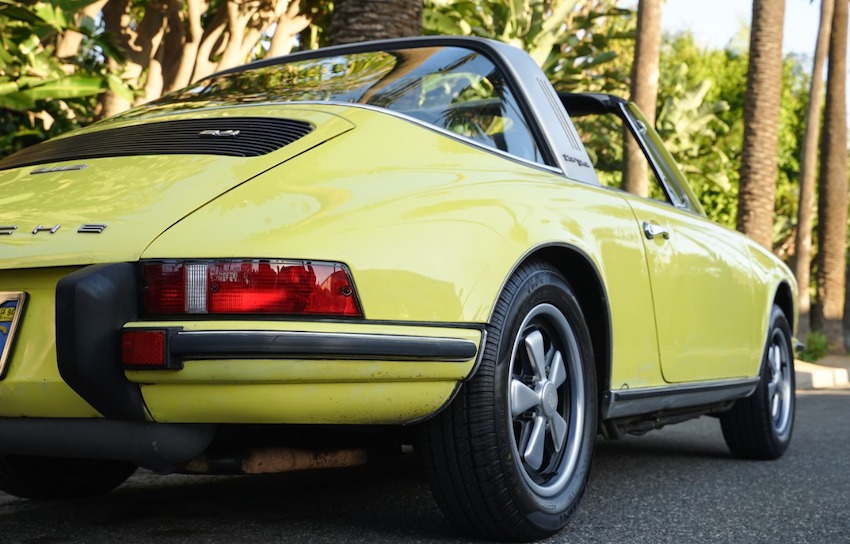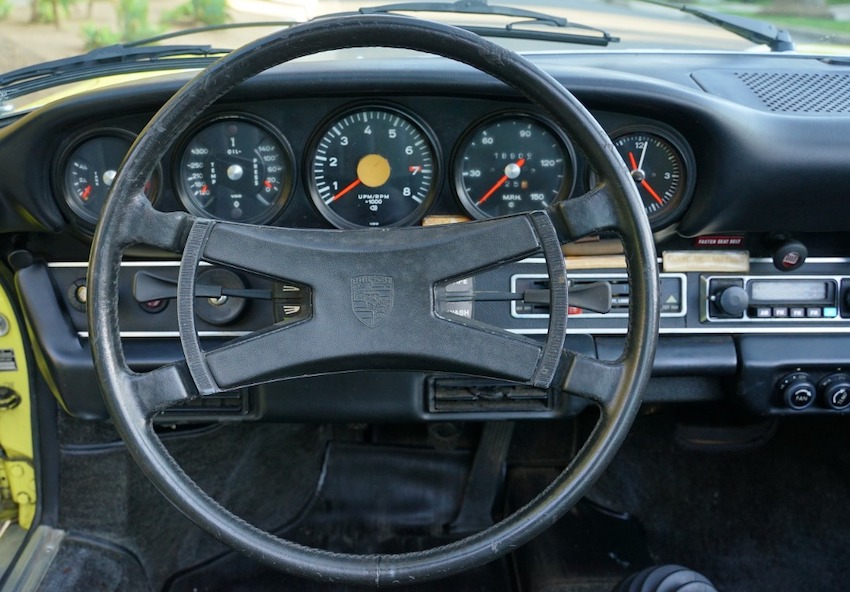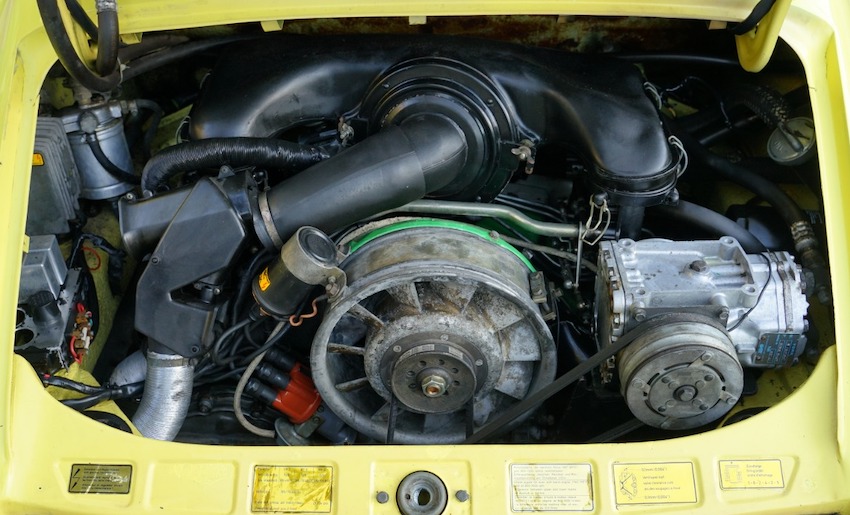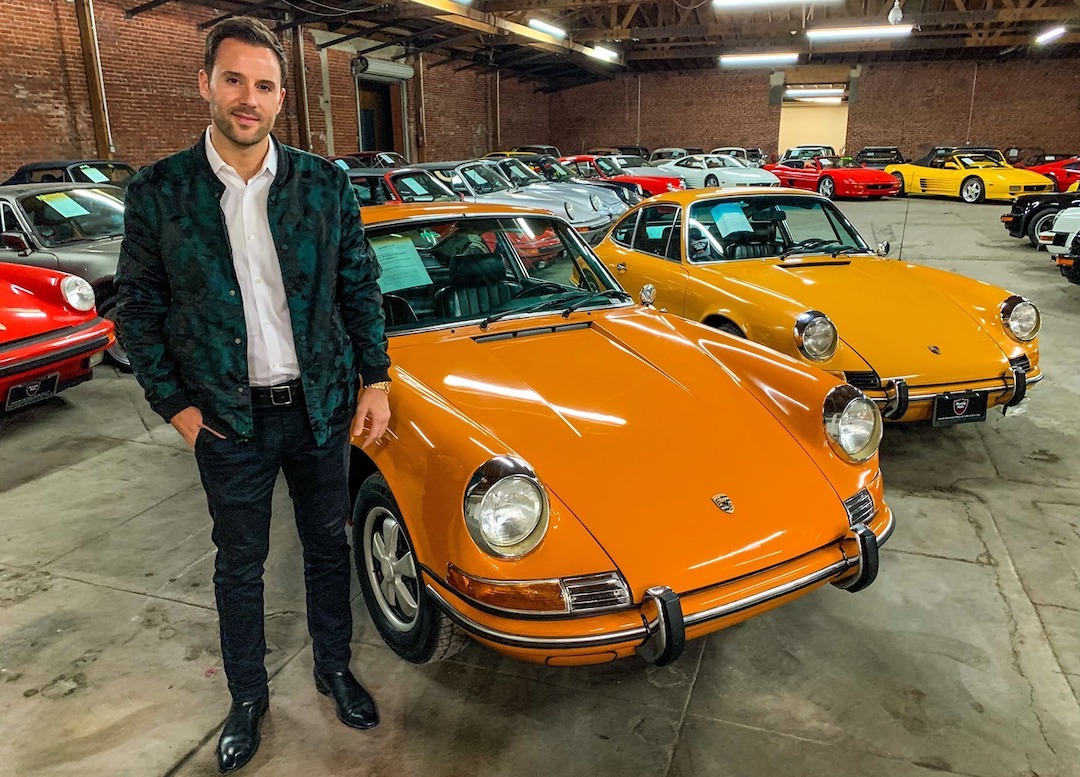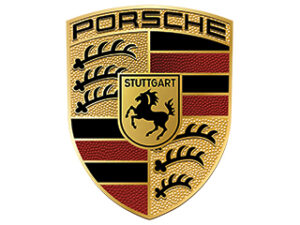Car Tales: Elegance Personified, The Porsche 911E Targa
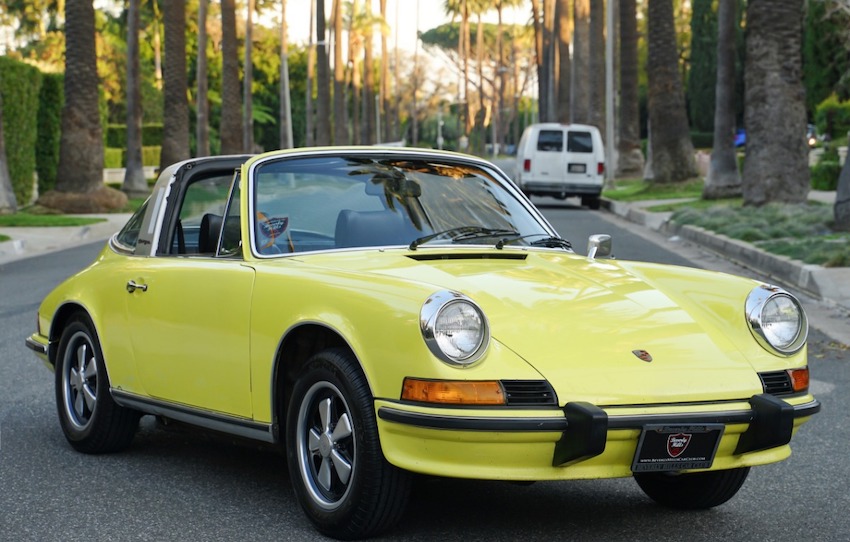
‘Because of its iconic flyline and elegant roof the shape of the 911E Targa is unmistakable. This design has characterized Porsche since 1963, part of the enduring legend of the company’s sports cars and their astonishing performance. Yet despite that somewhat macho image, there remains something subtly super-cute and charming about all Porsche 911s.
‘This recently discovered 1973 Porsche 911E Targa has matching numbers and comes in its factory color code #117 Light Yellow with a black interior. It’s equipped with a 5-speed manual transmission, 4-wheel disc brakes, G26 Group option: S trim, heated rear glass, sway bars, S instrument, air conditioning, and Fuchs wheels. This is an extremely original Porsche 911E, a very sought-after original blue plate California car that is an excellent addition to any Porsche enthusiast. Don’t miss your chance to acquire this original 911!
‘The Porsche 911E was the mid-range option in the E-series and F-series 911s. It benefited from the larger 2.4 engine which used a longer stroke for a total displacement of 2341 cc. 1972 Porsche 911Es had steel wheels for 1972 that were upgraded in 1973 – the one we have – to 6Jx15 alloy wheels by ATS.
‘Capable of reaching 0 to 60 mph in 6.2 seconds and with a top speed of 143 mph, Porsche’s 911E model of 1969-1973 essentially replaced the short-lived 911L (Luxus). The 911E was designed to be the more comfortable, more drivable model of 911 – fitting between the tamer 911T (Touring) and the high-performance type 911S (Super). In these years, the least-expensive model in Porsche’s range was the 4-cylinder 912, followed by the type 914.
‘The 911E’s designation derives from the German word for injection: einspritzung. The mechanical fuel injection ‘MFI’ system used on the 911E (and 911S) was jointly developed by Bosch and Porsche.
‘In the manner of much German machinery the Porsche 911 was the consequence of the honing together of a myriad extremely efficient pieces of engineering.
‘It is similar to the injection system used in the Carrera 6 of 1966.
‘In addition to more precise control of the fuel-air mixture and equality of distribution among the cylinders (compared to carburetors), the MFI contributed toward meeting the nascent emissions control regulations of the time. The 1969 types 911E and 911S also featured a new high-voltage capacitor ignition system that addressed the spark plug fouling problems experienced in earlier 911s.
‘Intended as the luxury model, the 911E came standard in most markets with the ‘comfort’ package of features: these included ventilated brake discs with aluminum calipers, velour carpeting, a leather-covered steering wheel, heavy bumper rub strips and rubber guard inserts, chrome rocker-panel trim, and gold-colored script on the rear deck.
‘Manufactured in Stuttgart in what was then West Germany, a prototype of the famous, distinctive, and durable design was shown to the public in autumn 1963. Production began in September 1964 and continued through 1989. It was succeeded by a modified version, internally referred to as Porsche 964 but still sold as Porsche 911, as are current models.
‘Mechanically, the 911 was notable for being rear-engined and air-cooled. From its inception, the 911 was modified both by private teams and the factory itself for racing, rallying, and and other types of automotive competition.
‘The original 911 series is often cited as the most successful competition car ever, especially when its variations are included, mainly the powerful 911-derived 935 which won the Le Mans 24 Hour race in 1979 and other major sports car races outright.
‘The 911 was developed as a much more powerful, larger, more comfortable replacement for the Porsche 356.
‘The new car made its public debut at the 1963 Frankfurt Motor Show. Initially designated as the Porsche 901, after its internal project number, it ran into opposition from Peugeot.
‘The French motor-car manufacturers protested on the grounds that in France it had exclusive rights to car names formed by three numbers with a zero in the middle.
‘So, instead of selling the new model with another name in France, Porsche changed the name to 911. The 911 first went on sale in 1964.
-Alex Manos, Owner

Get Started!
Welcome!
join our inventory newsletter
Sign-up for our e-mail alerts
join our newsletter
Sign-up for our e-mail alerts
Learn More
or
we buy classic cars
Looking to sell yours?
Contact us
Sell us your car
Pick up from any USA location - Any condition - Top $$$ Paid



